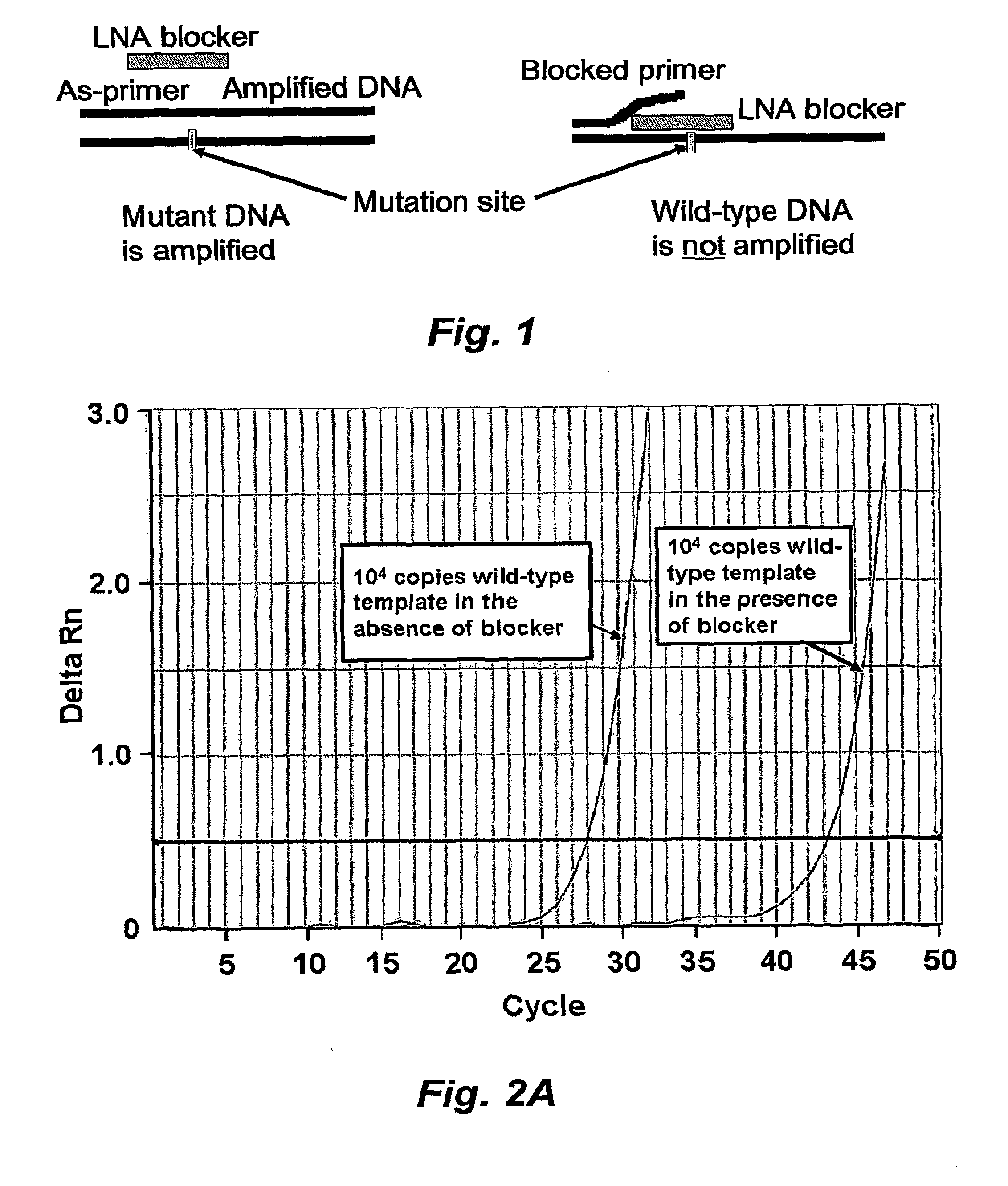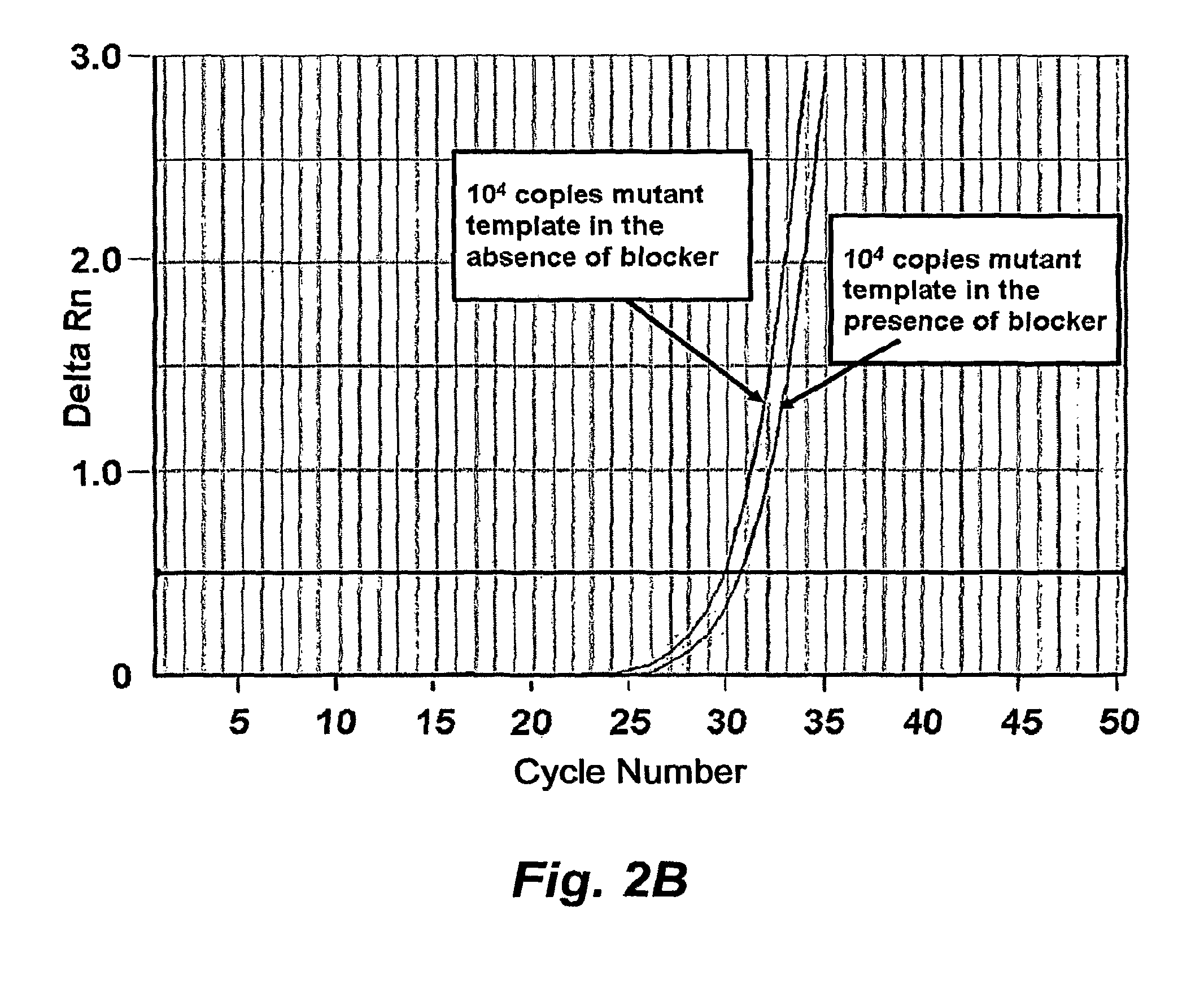Selective amplification of minority mutations using primer blocking high-affinity oligonucleotides
a technology of high-affinity oligonucleotides and selective amplification, which is applied in the field of nucleic acid detection, can solve problems such as blocking the detection of wild-type dna
- Summary
- Abstract
- Description
- Claims
- Application Information
AI Technical Summary
Benefits of technology
Problems solved by technology
Method used
Image
Examples
example 1
Selective Amplification of Minority Mutations Using Primer Blocking LNA Substituted Oligonucleotides
[0045]In this example, we demonstrate the utility of short high affinity oligonucleotides targeted to the wild type rather than the minority or mutant sequence. Rather than directly detecting mutant DNA, these probes block detection of wild type DNA. These “blocker” probes can be used in combination with longer “detection” probes to identify minority mutation in clinical specimens. The combination of short high affinity blocker probes and longer, lower affinity detection probes eliminates the single base specificity / complexity tradeoff in the design of nucleic acid probes.
[0046]In our approach, a short unlabeled “blocker oligonucleotide” is designed by using a high affinity nucleic acid analog such as LNA or PNA. A longer, natural DNA, labeled probe (detection probe) or PCR primer is then synthesized. Although the detection probe is longer than the blocking probe, its melting point is...
example 2
Detection of Rare Cancer Cells in Blood Using Primer-Blocking Allele-Specific PCR and Whole Genome Amplification
[0063]Detection of mutated genomic DNA from cancer cells circulating in blood may improve tumor staging and drug targeting. However, detecting a few mutated cells in a large (106 fold) excess of wild-type cells requires a sensitive and selective assay. In this example, we describe a novel approach to detect circulating melanoma cells harboring a common mutation in the BRAF kinase. In the first step of our approach, a high affinity locked nucleic acid (LNA) oligonucleotide was used to block PCR amplification of wild-type BRAF while permitting amplification of mutant BRAF. In the second step, the LNA blocking approach was combined with a mutant-specific forward primer. This two-step approach easily detected ten BRAF mutated melanoma cells in the presence of 105 wild-type cells. To determine the clinical utility of this method, we tested the ability of our method to detect hu...
PUM
| Property | Measurement | Unit |
|---|---|---|
| Length | aaaaa | aaaaa |
| Concentration | aaaaa | aaaaa |
| Frequency | aaaaa | aaaaa |
Abstract
Description
Claims
Application Information
 Login to View More
Login to View More - R&D
- Intellectual Property
- Life Sciences
- Materials
- Tech Scout
- Unparalleled Data Quality
- Higher Quality Content
- 60% Fewer Hallucinations
Browse by: Latest US Patents, China's latest patents, Technical Efficacy Thesaurus, Application Domain, Technology Topic, Popular Technical Reports.
© 2025 PatSnap. All rights reserved.Legal|Privacy policy|Modern Slavery Act Transparency Statement|Sitemap|About US| Contact US: help@patsnap.com



